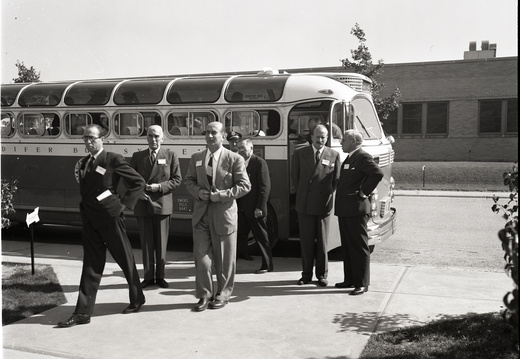
1947 LEWIS INSPECTION
The Flight Propulsion Research Laboratory hosted its first Inspection on October 8 to 10, 1947. The NACA created the Cleveland laboratory during World War II to study and improve aircraft engines. Initially, the lab concentrated on the piston engines, which powered contemporary military aircraft, but as the war progressed it began investigating turbojet engines. The laboratory reorganized after the war to concentrate nearly all of its efforts on the jet engine and high-speed flight. Technology advanced rapidly after the war, and the U.S. Army conducted the first supersonic flight days after the 1947 Inspection.
The 1947 Inspection highlighted different aspects of the laboratory’s engine work, including compressor, turbine, fuels, high-altitude combustion, and materials research. The Inspection also featured the laboratory’s Altitude Wind Tunnel—the nation’s only facility for operating full-scale jet engines in simulated altitude conditions. The lab demonstrated its flight research capabilities with an Administration Building flyby of a P-61 Black Widow aircraft with an operating ramjet engine underneath its wing. The Inspection also included an early view of the lab’s rocket engine work, complete with firings of small rocket engines in the new Rocket Lab test cells.
Over 1000 aviation experts attended the event. The aircraft manufacturers attended the first day, the military the second day, and local industry and political leaders the third. Jesse Hall managed all preparations. The lab also began the tradition of holding an open house for employees and their families the Sunday following the event. The 1947 Inspection is also notable for the presence of the NACA’s new director of Aeronautical Research, Hugh Dryden. Dryden had recently replaced the ailing George Lewis.
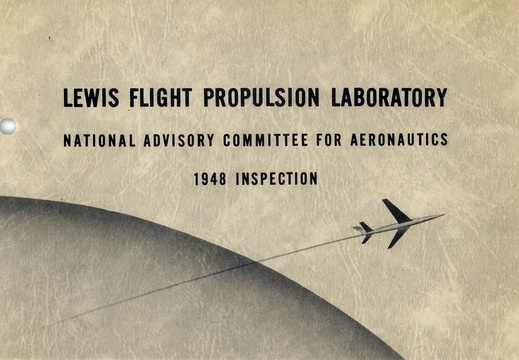
1948 LEWIS INSPECTION
The NACA renamed the Cleveland laboratory as the Lewis Flight Propulsion Laboratory during the 1948 Inspection to honor of the NACA’s former director of Aeronautical Research, George W. Lewis. Lewis passed away in July. NACA research contributed to the repeated breaking of the sound barrier during the past year and the advances in second and third-generation jet engines.
The 1948 Inspection, held September 28 to 30, 1948, included eight 30-minute stops that showcased the laboratory’s turbojet work, particularly the compressor and turbine research and the thrust augmentation devices such as the afterburner and variable-area nozzle. The tour stops also featured high-energy rocket fuels, jet engine icing research, and turboprop testing. The lab unveiled the new Four Burner Area, which included two altitude test cells for engines; the new Jet Propulsion Fuels Building with its tower descending into a valley; and the 8-by 6-Foot Supersonic Wind Tunnel, which was under construction.
The laboratory presented the technical talks for employees on Friday, October 1, and held open house—without the presentations—on Sunday, October 3, for families and friends. Heavy weather on the second day of the Inspection prevented many frustrated guests from landing at Hopkins Airport.

1949 LEWIS INSPECTION
The Lewis Flight Propulsion Laboratory’s third Inspection, on September 20 to 22, 1949, featured the nation’s largest supersonic wind tunnel, the brand new 8-by 6-Foot Supersonic Wind Tunnel. Guides provided the guest with descriptions of the tunnel’s operation and instrumentation. The 1949 Inspection was the NACA’s first attempt to present the material in a streamlined manner that reduced the amount of technical language and increased the use of visual aids.
During this period, Lewis concentrated its efforts on the ever-increasing demand for additional engine power, particularly for the military. Just weeks before the Inspection, Lewis appointed Abe Silverstein as director of research. Silverstein’s opening remarks stressed the interconnectedness of the laboratory’s various research groups in pursuing the laboratory’s mission of “understanding the basic nature of the propulsion process.” The tour stops covered issues such as supersonic missile research, afterburners, altitude ignition, high-temperature materials, compressor and turbine work, and rocket fuels.
More than 1200 guests attended the 1949 Inspection—industry one day, military the next, and local businesses the third. Robert Sessions supervised the planning of the event, which included the enlistment of 125 apprentices to construct six protective mounds around the Rocket Lab. Again, the staff could view talks on Friday, and families could tour buildings on Sunday.
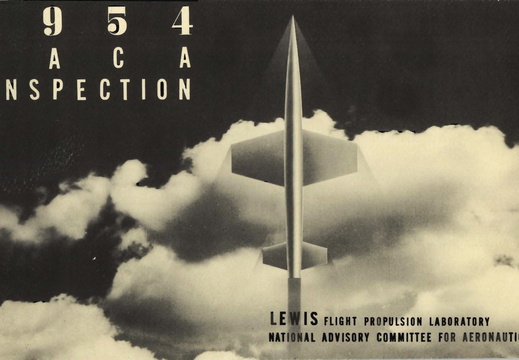
1954 LEWIS INSPECTION
The Cold War was a theme central to the June 2 to 4, 1954, Inspection of the Lewis Flight Propulsion Laboratory, Lewis’s first since 1951. The recent death of Joseph Stalin and the end of the Korean War did little to ease the relations with the Soviet Union. In his opening remarks, NACA Secretary John Victory noted, “The race for air supremacy is on. The scientific war is on. These are the days in which we will lay our plans for survival or build our own tombs.” The NACA’s contributions were critical to the continued increases in U.S. aircraft’s speeds and altitudes as well as to the issues concerning the first missile systems.
During the 1954 Inspection Lewis highlighted its new Propulsion Systems Laboratory, which was the Nation’s most powerful altitude testing facility for engines. Lewis was also pursuing issues related to high-speed flight. This included transonic compressors, aerodynamic heating on missiles, ramjet engines, and turbine cooling. Although Lewis remained focused on aircraft propulsion, the lab expanded its high-energy propellants and nuclear propulsion research. Lewis’s first liquid hydrogen-liquid oxygen rocket firing took place just months after the Inspection. Researchers also highlighted their efforts on the extensive Crash Fire Test Program and reverse thrusters. Langley and Ames showcased their aerodynamics and flow visualization work.
The 1954 Inspection was the first of the NACA’s Triennial Inspections. The NACA instructed Lewis, Langley, and Ames to rotate their Inspections so that each laboratory would hold one every 3 years. The 1954 Lewis Inspection attracted 995 guests. The laboratory held its open house for employees and their families the following Sunday. The 4374 visitors toured nearly all of the laboratory’s facilities and heard a reprise of the Inspection presentations. Wilson Hunter again supervised all preparations.
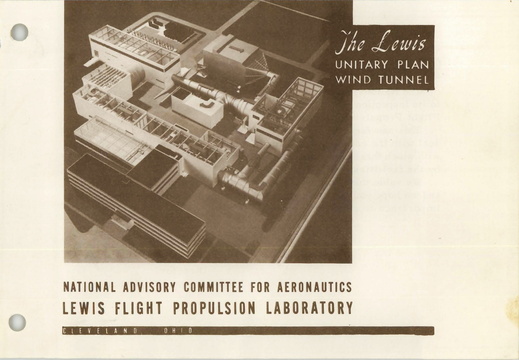
1956 LEWIS INSPECTION
The Lewis Flight Propulsion Laboratory held a unique Inspection on May 22, 1956. The one-day event was dedicated entirely to the new Lewis Unitary Plan Tunnel—since renamed the 10- by 10-Foot Supersonic Wind Tunnel. The $33-million facility was the most powerful wind tunnel in the nation. Over 150 guests from industry, other NACA laboratories, and the media attended the event.
The crowd assembled in the shop area before the tour. Lewis Director Raymond Sharp began the event by welcoming the visitors to the laboratory. NACA Director Hugh Dryden discussed Congress’s Unitary Plan Act and its effect on the creation of the facility. Lewis Associate Director Abe Silverstein discussed the need for research tools and the 10 by 10’s place among the NACA’s other research facilities. Lewis Assistant Director Eugene Wasielewski described the detailed design work that went into the facility. Carl Schueller, Chief of the 10 by 10, described the tunnel’s components and how the facility operated. Robert Godman led the tour of the facility afterwards.
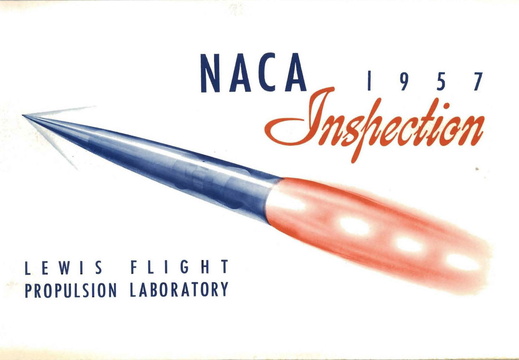
1957 LEWIS INSPECTION
The Lewis Flight Propulsion Laboratory’s October 7 to 10, 1957, Inspection event took place at the literal onset of the space age. Lewis had been working on rocket propulsion and missile aerodynamic issues since the mid-1940s and was already pursuing electric propulsion for space. By the mid-1950s the efforts to develop high-energy propellants, particularly liquid hydrogen, were producing real results. Although Lewis was also unveiling its new Rocket Engine Test Facility, the NACA was wary of overstepping its aeronautical mandate by discussing space work at the Inspection.
On Thursday October 3, NACA Secretary John Victory led a group from Headquarters through the final dress rehearsals. Victory interjected when references to space flight were mentioned. Victory ordered the frustrated researchers to strike those lines from their talks so as not to offend the visiting Congressional representatives. The next evening the Soviet Union launched Sputnik. When the Inspection began on Monday morning, the original talks were in place, and the guests praised Lewis for its readiness for the space race.
The tour stops included an extensive description of its high-energy rocket propellants work. There were also new aeronautics efforts dealing with nuclear propulsion, hypersonic flight, noise abatement, and high-energy fuels. Over 1700 guests attended the Inspection. Wilson Hunter supervised the preparations. The event was followed by an Employees Day Friday afternoon and a Family Day on Sunday. The 1957 event was Lewis’s last Inspection for nearly a decade.
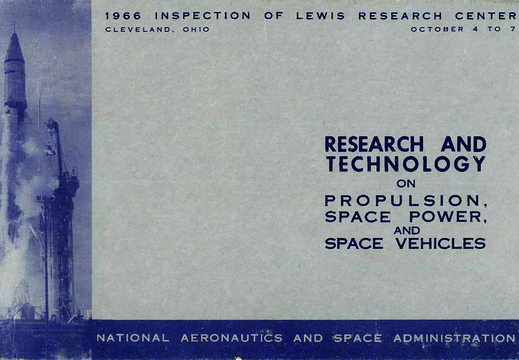
1966 LEWIS INSPECTION
The Lewis Research Center’s October 4 to 7, 1966, Inspection was its first since 1957. In the interim, the NACA disbanded and Lewis was incorporated into the new NASA space Agency. The Center reorganized to focus exclusively on space-related research and took on the management of the Centaur, Agena, and M-1 engine developmental programs. Now, Lewis was just starting to refocus its efforts to tackle issues related to civilian aviation. Associate Director Eugene Manganiello remarked at the dramatic accomplishments made since the last Inspection 9 years beforehand and noted the controversy over the references to space leading up to the 1957 Inspection.
The 1966 Inspection featured 10 stops—half of which dealt with the Center’s space efforts. These addressed fluid behavior in microgravity, advanced chemical rocket engines, the Centaur rocket, ion engines, and an in-depth description of the space power systems. There were also stops that discussed materials and basic research on solar cells, lasers, and other subjects. The aeronautics talks described the Center’s engine noise reduction work and air-breathing engine research. The Inspection included a film on Lewis’s remote test facility at Plum Brook Station [today, Neil Armstrong Test Facility] and demonstrations at the new Zero Gravity Facility.
The 1966 Inspection was also part of a year-long celebration of the Center’s 25th anniversary. Nearly 2000 invited guests attended the three-day Inspection. Wilson Hunter managed the Inspection activities. For the first time Lewis hosted the guests in the Development Engineering Building auditorium instead of the Administration Building. In addition to the presentations at the major facilities, the guests viewed the Gemini VII spacecraft, a Centaur rocket, and other displays in the hangar. After the Inspection, the Center hosted an open house for employees and their families.
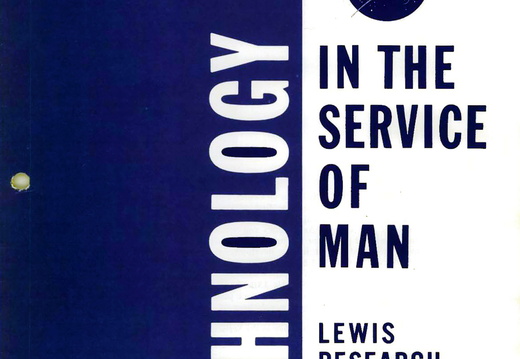
1973 LEWIS INSPECTION
NASA intended the September 19-21, 1973 Inspection at Lewis Research Center to be the first of a new round of Inspections at its three former NACA centers. The Apollo Program had recently ended, and the Agency’s budget was plummeting. The reductions impacted Lewis, Ames, and Langley research centers more than the space flight centers. In addition, public enthusiasm for NASA had waned significantly since the Apollo 11 mission in 1969. To address this latter concern, the theme of the 1973 Inspection was “Technology in the Service of Man.” It sought to demonstrate how NASA’s aeronautics and space research benefited life on Earth.
In a dramatic shift, only three of the nine stops covered space topics, and these stressed their terrestrial applications. Speakers tied the Centaur rocket program to insulation and cryogenics breakthroughs that improved medical facilities, space communications systems to television signal transmission, and satellite-to-Earth observation tools. The aeronautics talks discussed quiet engines, vertical and short take-off and landing aircraft, and pollution reduction. There was a new stop dedicated to renewable energy research, as well as stops detailing the Center’s work on composite materials and lubrication systems.
Nearly 900 guests attended the 1973 Inspection, which included exhibits from all of the other NASA centers in the hangar. Walter Olson managed the planning of the event. Lewis also held an open house for employees on the Sunday after the Inspection. This was followed by a multiday public open house during which 22,000 visitors listened to the talks and viewed the exhibits. Although the 1973 Inspection was a success with both the guests and visitors, it did not produce the political support that NASA had hoped for. It was the final Inspection.
